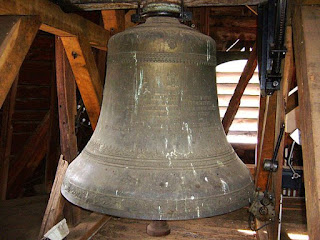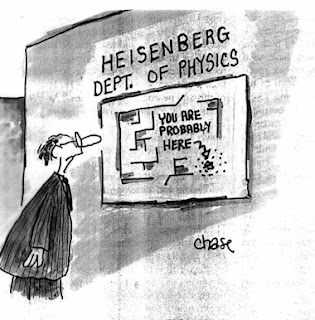The Bell on the Holy Island
Unfortunately these devout people were a bit overambitious. When the
tower and the bell were completed, they found that the bell was too large and
too heavy to be lifted to the top of the tower. With the best equipment they
could muster at that time, they could only succeed to lift the bell about 10
centimetres from the ground. It became clear that even if the bell could be
lifted to the top of the tower, it would be impossible to swing it in order to get
any sound from it. This was a very sad situation, since the bell had the volume to be heard over the whole island, and when testing it by tapping with a
hammer, it had also the most divine sound. It would have been the ideal bell
to attract the attention of everybody.
The bell master came up with a solution: He proposed that they should
keep the bell at its present height and cast two smaller bells to be lifted into
the tower. He will then devise a mechanism so that the tongue of the large
bell can be swung within the bell when the other two bells are also tolling. A
miracle happened! The three bells together made the most beautiful music
ever heard. People even came from all over mainland Europe just to listen to
this marvellous sound.
During 1925 a young German physicist visited the island. One day he was walking past the bell tower while the bells were tolling. He looked up at the two smaller bells swinging in the tower
and then at the stationary bell at the foot of the tower in absolute astonishment. He was considered to be a brilliant theoretical physicist, but was not
very adept when it came to practical matters. After the mass this physicist went to the padre and asked him the following: “Padre, I understand why the two bells in the top of the tower are tolling
since they swing and thus encounter their tongues which hang stationary
when they are not swinging. But this stationary bell below the tower confounds me: How can it toll without swinging?” So the padre answered: “My
son, what we do is to swing the tongue within the bell”.
The young scientist answered: “But padre, I have come to the conclusion that one should only accept what one can observe and measure. Anything else is not worthwhile knowing since it cannot be known. I do not see
any tongue swinging within this bell even when I peek below the rim of the
bell, and since all church bells the world over only toll when they are swung
against their tongues, it is impossible for me to accept that there is a tongue
swinging within the bell”. No matter how much the padre tried to convince this
young man that there is a tongue swinging, he could not succeed. The padre
finally argued that if you tilt the bell by a certain amount you will be able to
see the tongue.
The young physicist asked the padre if he would allow him to pay for,
and obtain the equipment to tilt the bell so that he could see whether there is
a tongue. To end the argument, the padre agreed. This was duly arranged
and when the physicist looked, he saw that there was indeed a tongue hanging against the side of the tilted bell. He then asked the padre to swing the
tongue so that the bell can toll. The padre informed him that this was only
possible once the bell has been restored to its non-tilted position. “Aha said
the physicist I told you that the tongue cannot swing”. The padre informed
him that it can swing but only once the bell is in a position so that the tongue
cannot be seen.
The young physicist looked very worried for a while, but suddenly his
eyes lit up and he exclaimed: “Aha, now I understand: When I cannot see the
tongue it can swing and toll the bell but when I see it, it cannot. Thus by observing the tongue it acts differently than it can when I do not observe it.
Thank you padre, you cannot imagine how much you opened my eyes. I am
spending a post-doctoral year in Copenhagen, and your bell has solved a
very important problem in physics with which I have been wrestling over the
past months”...




Comments
Post a Comment